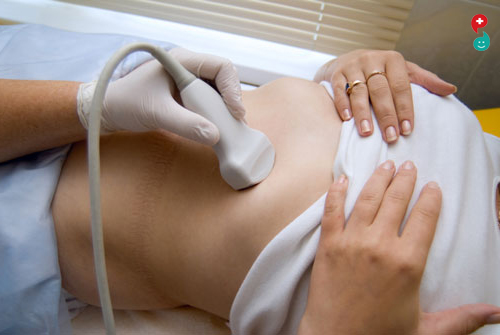
Abdominal Tap
What is Abdominal Tap?
Abdominal tap, or paracentesis, is a procedure to remove excess fluid from the abdominal cavity, which is the area between the abdominal wall and the spine. Excess fluid in the abdomen is called “ascites.” Normally, there should be no ascites within the abdominal cavity. This fluid in the abdominal cavity can cause bloating, pain, and breathing difficulties. An abdominal tap is done to remove excess fluid and determine the cause of the fluid buildup.
What Happens During an Abdominal Tap Procedure?
Before you have an abdominal tap, your doctor will take your medical history and give you a physical exam. They may also order other laboratory tests. The abdominal tap can be done in the doctor’s office, a treatment room, or in the hospital. You shouldn’t eat or drink anything 12 hours before the procedure. You’ll also need to empty your bladder. An abdominal tap procedure takes about 15 to 20 minutes, and no general anesthesia is required. An abdominal tap involves the following steps:
1. The procedure area is cleaned and shaved.
2. Your doctor then applies a local anesthetic. This numbs the area to prevent any pain or discomfort. For larger fluid removal, your doctor may need to make a small cut in the skin to accommodate the needle.
3. Once the area is ready, your doctor inserts the need tap into the skin. The needle itself only goes 1 to 2 inches deep. Here, the fluid is extracted with the syringe.
4. Then, your doctor will remove the needle. Your doctor may or may not use ultrasound during the abdominal tap. The amount of fluid removed depends largely on the original purpose of the procedure. Your doctor may perform a small diagnostic tap, or they may perform a large-volume tap. During a large-volume tap, your doctor will remove several liters of fluid to decrease the pressure and pain. If this is the case, a tube may be attached between the needle and syringe to help your doctor get more fluids.
After the procedure, your doctor will dress the wound and make any necessary stitches. If a diagnosis is needed, the bottle of fluid will be submitted to a laboratory.
What Are the Risks Associated with an Abdominal Tap?
Risks associated with an abdominal tap are rare, but the most common risks are minor trouble breathing and fluid leakage right after the procedure. Usually, you’ll have to wait to leave the doctor’s office or hospital until those clear up. Other risks include:
a drop in blood pressure, which only occurs if a significant volume of fluid is removed
an accidental puncture of a blood vessel, the bowel, or the bladder
an acute kidney injury
an infection
Certain risk factors may also increase the chances for complications, especially if you have cirrhosis. You may also be more likely to develop an infection if you’re a smoker or drink too much alcohol on a regular basis. Poor nutrition can also increase the risk for infection.
Once you’re at home, call your doctor immediately if you develop any of these symptoms:
-a fever
-chills
-redness around the needle puncture site
-swelling around the needle puncture site
-increased pain
-bleeding
-leakage of fluid
-a cough
-shortness of breath
-chest pain
-fainting
-increased abdominal swelling
Understanding the Results of an Abdominal Tap:
Cirrhosis is the most common cause of abdominal fluid buildup that requires a diagnostic abdominal tap. Since cirrhosis is irreversible, treatment for this condition concentrates on preventing further liver damage. Ascites in such cases is often a sign that liver failure is imminent. Other possible results and causes of this type of fluid retention are:
an abdominal injury
an infection
liver disease
bowel damage
leakage of lymphatic fluid
heart disease
kidney disease
pancreatic disease
a tumor
low levels of proteins in the blood
internal bleeding
Depending on the results of the abdominal tap and any other test performed, further medical care may be needed. Your doctor may recommend that you monitor your body weight to catch more fluid buildup. Further tests may also need to be done, such as ultrasounds, CT scans, and blood tests.
Outlook and Recovery:
An excess fluid buildup in the abdominal cavity isn’t normal. Therefore, an abdominal tap is necessary to remove the fluids and determine the cause of buildup. Recovering from the procedure is usually straightforward, and you’ll likely be able to resume normal activities once the wound heals. Check with your doctor about exercise and other physical activities after the procedure, especially if you have stitches.The outlook depends on the underlying cause of ascites. Depending on your condition, you may require multiple abdominal taps in the future if fluid continues to build up in your abdominal cavity. people with liver disease who develop ascites have a 30 and 40 percent chance of surviving five years. At this point, a liver transplant is necessary.







